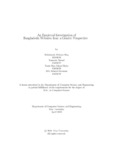An empirical investigation of Bangladeshi websites from a gender perspective
Abstract
Gender inclusiveness in computing settings is receiving a lot of attention, but one
potentially critical factor has mostly been overlooked: Websites. In this paper, we
present the investigation which is a multiple case eld study of two websites of di er-
ent categories through experimental lab study and user surveys. We also investigate
to understand if there is a psychological di erence when it comes to self-e cacy,
processing of information and tinkering between both genders. Our experimental
result has shown signi cant di erence in the Self-e cacy where males are seen to
be more con dent while working in computing settings than females. Using the
ANOVA Calculator the p-value of self-e cacy is 0.000085 which is signi cant at
p<0.01. Also, we tested the tinkering tendencies of males and females, the e ect of
which was a negative correlation between Tinkering and Time Taken to nish the
tasks on BRAC University website, the Pearson value was -0.729. The Fisher Exact
Test value, 0.0911 is greater than 0.05, showing a signi cant di erence between the
Tinkering of males and females. Furthermore, while processing information, males
and females are known to follow di erent approaches. It is found that, partici-
pants' task success had a positive correlation with Selective Information processing
in BRAC University website, with a Pearson value of 0.658. The overall task com-
pletion rate of female participants is 44.65 percent and that of male participants
is 66.05 percent, on the selected websites showing a notable di erence. Hence, our
empirical investigation proposes the relevance of accounting for gender di erences
when it comes to building websites, softwares or any Information Technology(IT)
systems, which has not been considered yet in Bangladesh.

